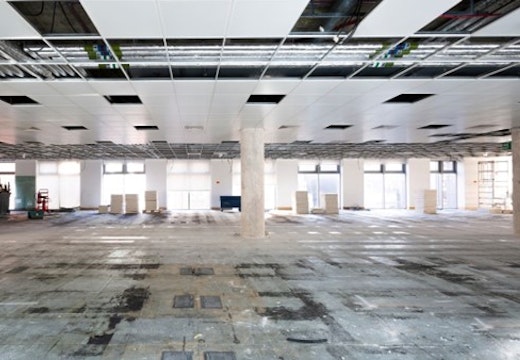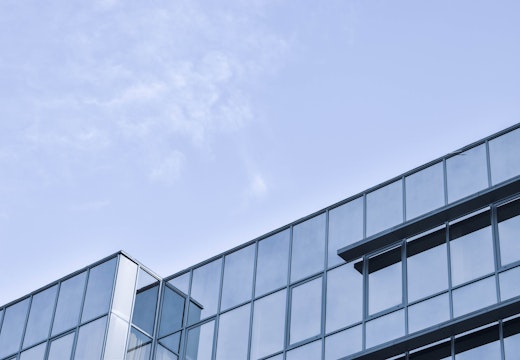Light ahead: preparing for UN Sustainable Development Goals 2030
Meeting the UN goals on sustainable development 2030 means that lighting manufacturers must help office occupiers get their house in order. Here’s what Fagerhult is planning for the future
When UN member states including the UK unanimously adopted the 2030 Agenda for Sustainable Development back in 2015, there were considerable implication for lighting manufacturers such as Fagerhult in supporting its 17 sustainability goals.
We’ve identified four key areas to make a contribution: affordable and clean energy; sustainable cities and communities; responsible consumption and production; and climate action. While we delve into the latter two in greater detail, it’s essential to briefly touch upon the first two.
As regards affordable and clean energy, in developed countries, LEDs have replaced outdated, energy-inefficient technologies. However, this shift is not universal, particularly in developing countries. Suppliers must focus on creating affordable LED options, emphasising their quick return on investment despite initial costs.
‘The transition to LED lighting extends beyond energy efficiency to encompass the social aspect’
Looking at sustainable cities and communities, the transition to LED lighting can enhance overall energy sustainability. This goal extends beyond energy efficiency to encompass the social aspect, aiming for inclusive and safe places with outdoor lighting playing a critical role.
Given that one action can impact multiple goals, we are committed to exploring actions that can address all four identified goals, with a specific emphasis on responsible consumption and production, along with climate action.
Energy consumption: the challenge
Countries committed to the 2030 agenda face a challenge due to conflicting decisions. Lighting regulations in the UK and EU, influenced by the BS EN 12464‑1 standard, emphasise higher light levels for ceilings and walls. This shift, driven by a desire for worker wellbeing and an ageing workforce, poses a challenge to energy conservation.
Bodies beyond governments are responding to this challenge. Many building owners are opting for voluntary commitments like the WELL Building Standard, emphasising lighting that promotes mental and physical health and aligns with daily circadian rhythms.
Energy consumption: solutions
Mitigating the energy implications involves understanding ‘the right light in the right place at the right time’ according to Leslie Thomas, Lighting Technology Manager, Fagerhult UK. What does the right light mean, in terms of energy? Careful planning prior to installation; use of the most efficient lighting (LED efficiency is currently increasing at 2-3 per cent per year); and maximum use of daylight.
Another aspect of the right light is a subtle one. All LEDs experience depreciation – they shine less brightly over time. Required light levels are driven largely by regulation that must hold even for an old LED, so typically engineers over-light on purpose, at least at the start, such that the lighting levels are acceptable years later. This wastes energy in the early stages.
Most Fagerhult luminaires incorporate Constant Light Output – the driver software inside the fitting is told to use a bit less than full power at first, slowly ramping this up over the years, such that the light output is constant, with no wasted energy.
This piece is largely about how we can help, but the right place element of the solution involves the customer too, working together with the manufacturer and installer. If a building owner wants maximum flexibility, or cannot say where desks will be, the outcome often is flooding the space with desk-appropriate light. This is despite actual desk space forming a minority of office square-footage overall. Organisations likely have sustainability commitments, and legally have Energy Performance of Buildings obligations, and so have every reason to avoid this.
We make the best possible lighting, and then we turn it off’- Henrik Clausen, Director, Fagerhult Lighting Academy
The right time is perhaps the key point. This emphasises the importance of dimming or deactivating luminaires whenever possible. Simple motion sensors to turn off unneeded lights are now fairly standard, but Fagerhult offers more sophisticated options such as Organic Response.
As a quick example of the potential, if the system detects just one or two workers in a large office, it might keep the fitting above them on full, then progressively reduce to 60, 40 then 20 per cent across the room, greatly reducing energy use, even compared to a more traditional motion-sensor solution.
Sensor information can also be used to create ‘heat maps’, showing the patterns and levels of usage throughout your space, for later refinement of your systems.
The importance of switching on only what is needed can’t be over-emphasised; it can potentially reduce energy use by several fold. Henrik Clausen, Director at Fagerhult Lighting Academy, has an even simpler formulation: ‘We make the best possible lighting, and then we turn it off.’
Responsible production
In the case of buildings that use fossil-free energy, about 80 per cent of a luminaire’s life climate impact comes from materials. Even customers not yet making that commitment are getting closer to it each year, as we progressively phase out fossil fuels; materials concerns are important today, and will get more important every year. Fagerhult has a goal of ensuring that our products will consist of at least 80 percent renewable or recycled materials by 2030.
Current products include Multilume Re:Think, which is made of (renewable) cardboard, is light and easy to transport, and has installation instructions printed on an unobserved portion of the luminaire body, saving several pieces of paper per unit; and Discovery, a plastic luminaire, with the plastic made from renewables such as pine oil.
Looking ahead
The 2030 agenda was agreed on 25 September 2015 by a unanimous vote of the UN General Assembly, followed swiftly by the 2015 Paris Agreement on climate change – an astonishing outbreak of consensus, given the inertia inherent in international diplomacy. These choices were made in response to an awareness that we face enormous and unprecedented challenges.
If citizens, countries and organisations like ours pull together and each do our bit, we will hopefully find ourselves looking towards the future from a healthier spot, when 2030 dawns.








